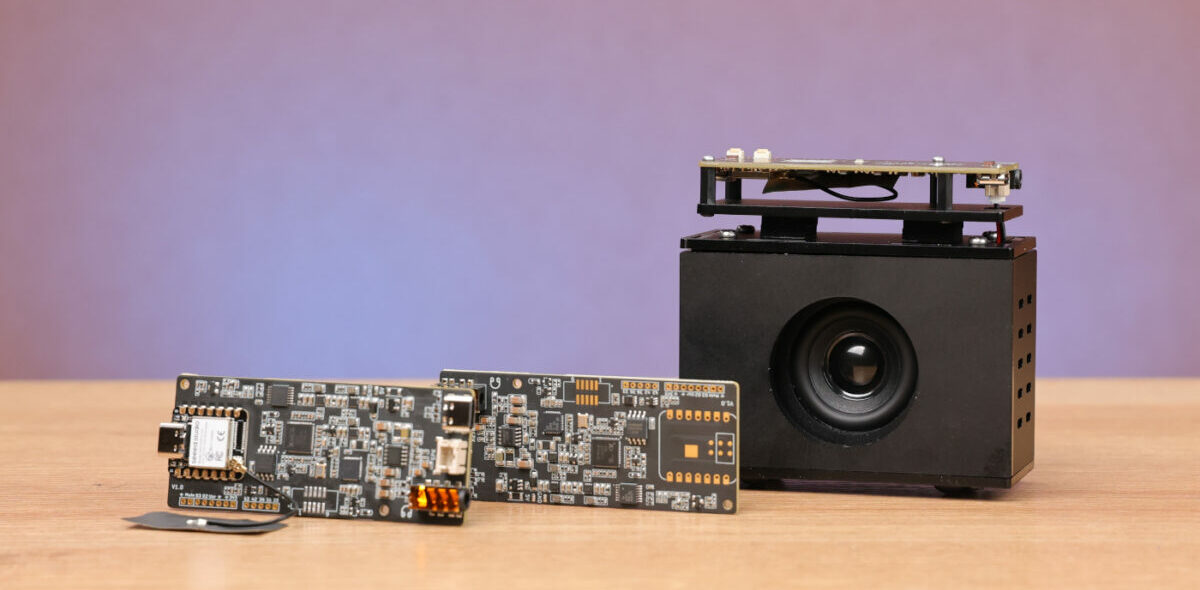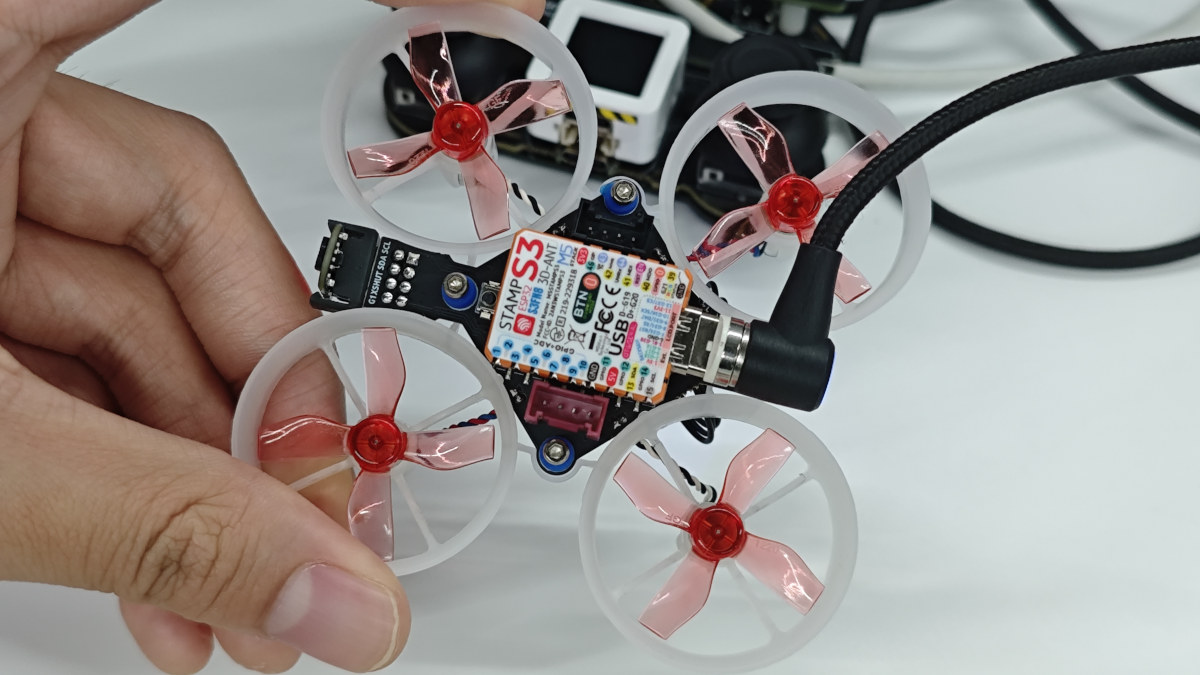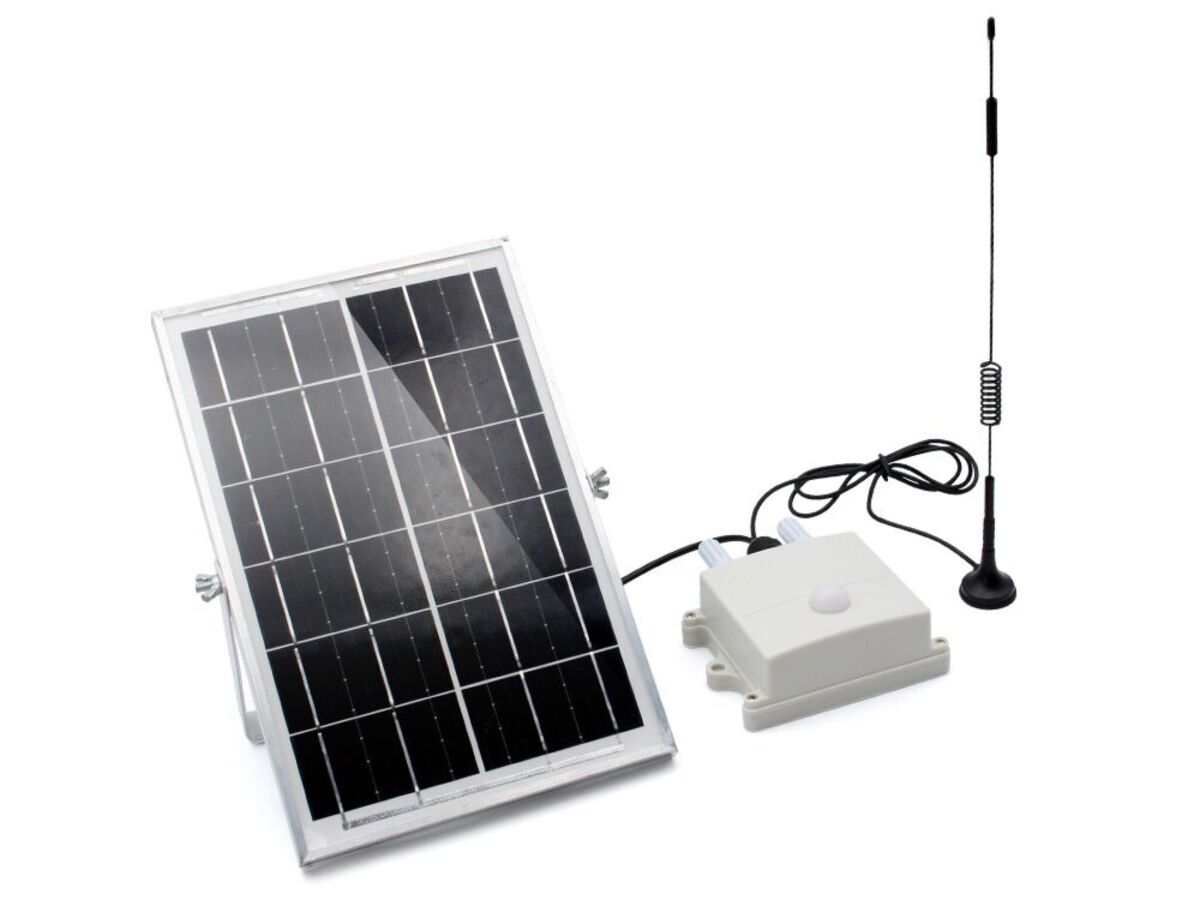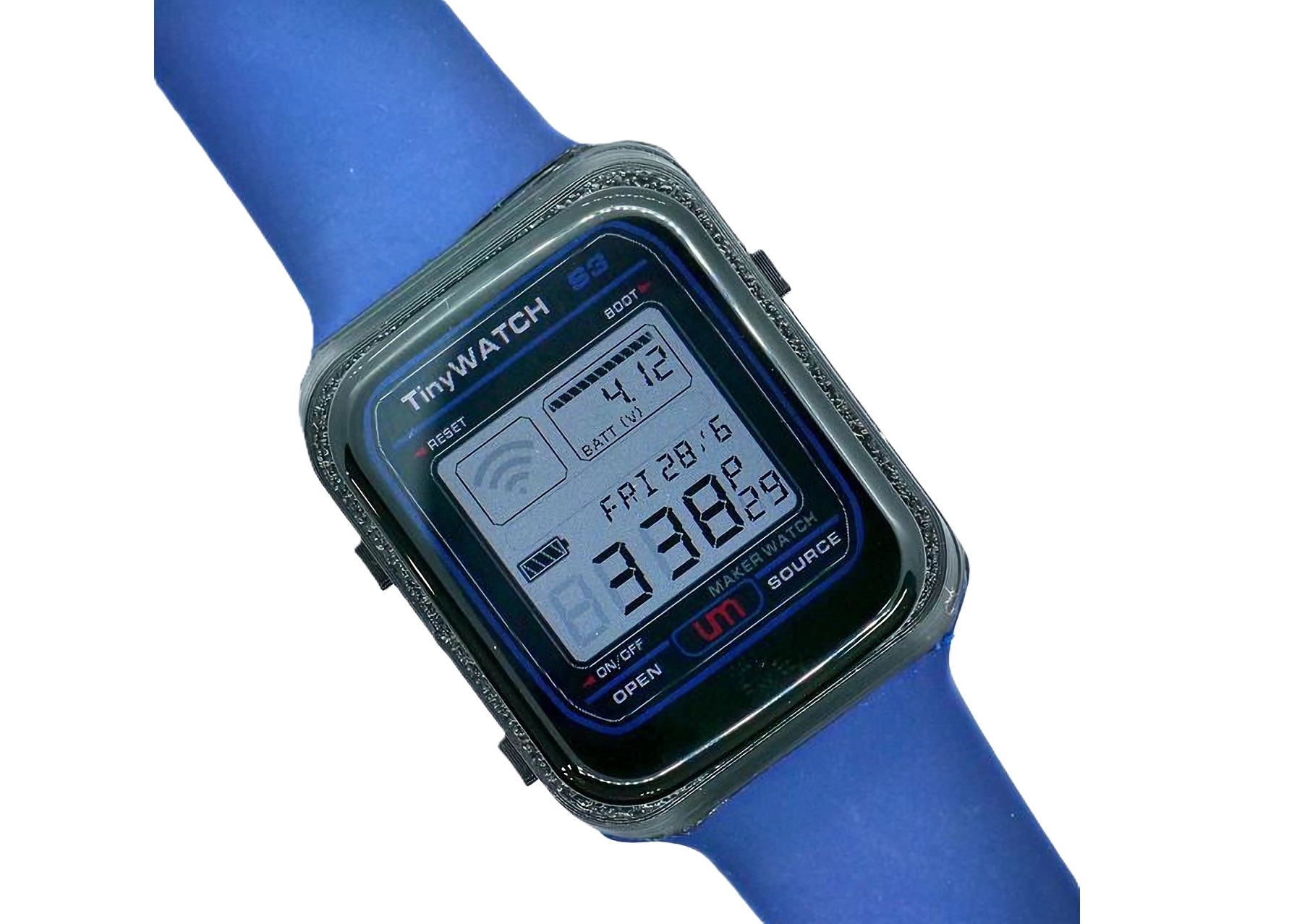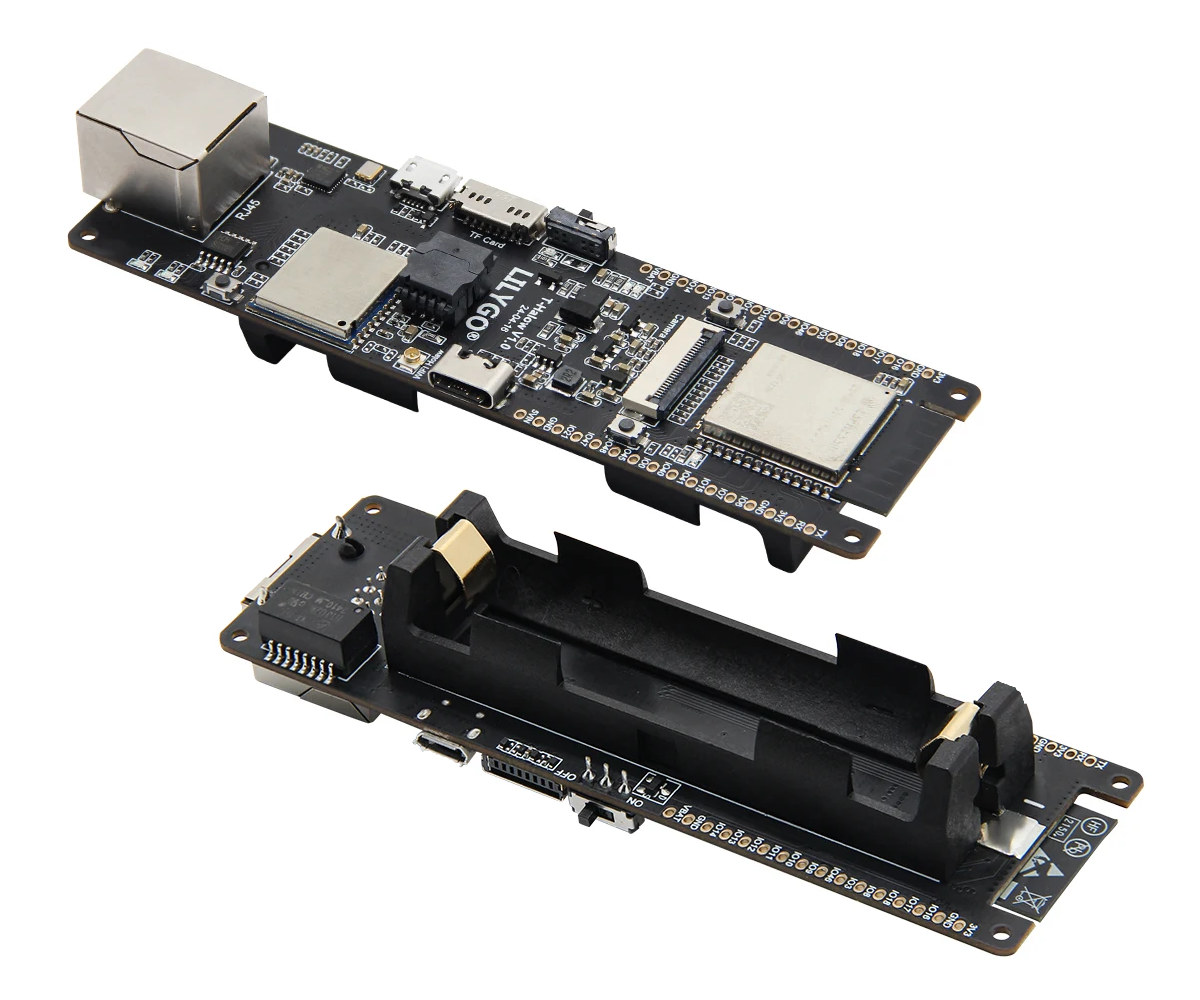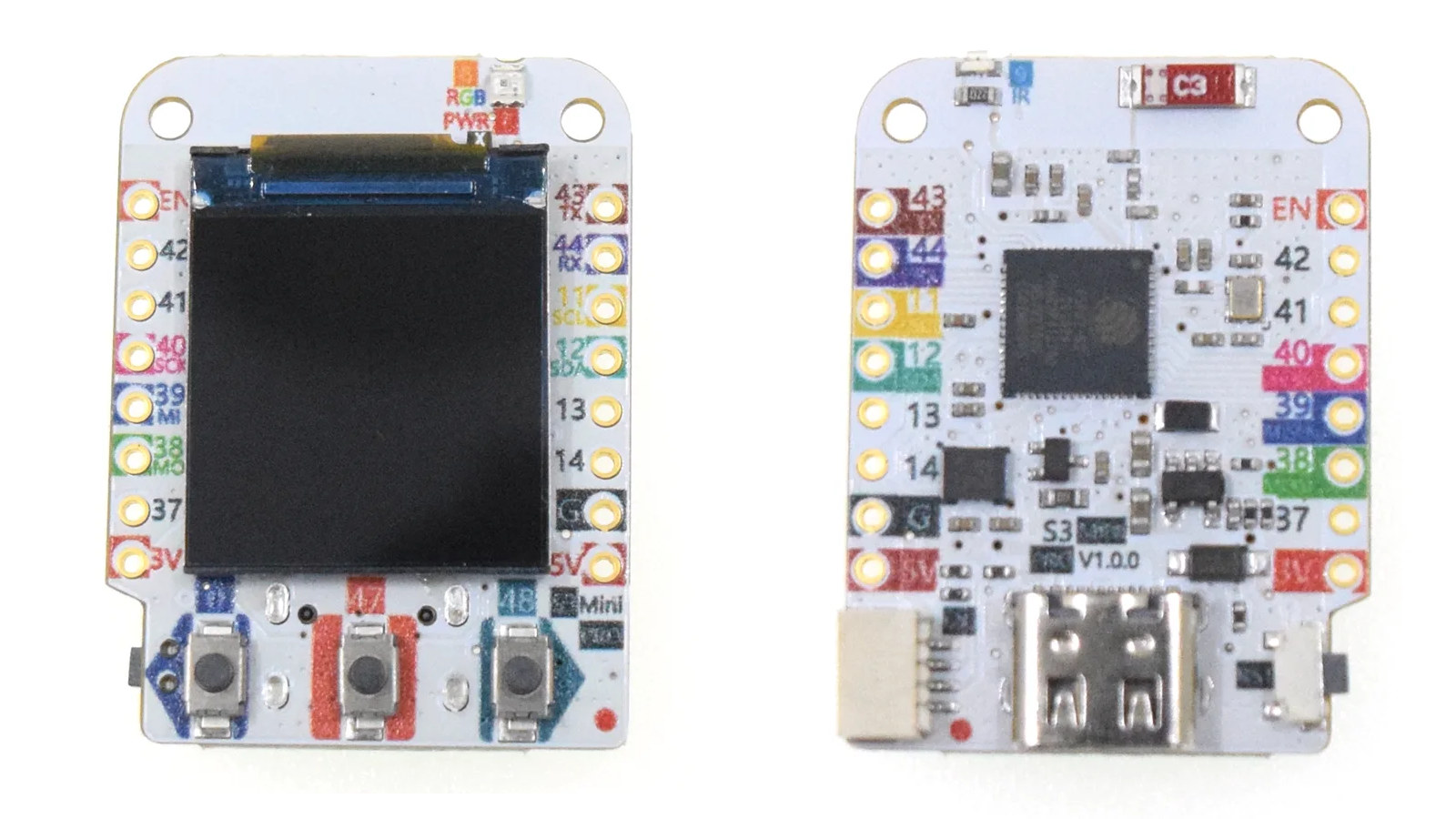Seeed Studio’s ReSpeaker Lite Series includes the ReSpeaker Lite 2-Mic Array and Voice Assistant Kit, featuring the XMOS XU-316 AI sound chip for advanced voice processing and integration with Home Assistant via ESPHome. It’s perfect for smart home control with far-field voice capture and noise cancellation. The kit combines the ReSpeaker Lite dual-microphone array with the XIAO ESP32S3 module for voice recognition, noise reduction, and processing. It supports WiFi, BLE 5.0, and has a 2.4GHz rod antenna. It also offers I2S and USB connectivity for use with microcontrollers and SBCs, making it ideal for smart voice assistants and home automation. We’ve previously covered the NXP i.MX RT106F & RT106A/L, where NXP i.MX RT106A can run voice assistant software with features like acoustic echo cancellation, ambient noise reduction, beamforming, barge-in, and playback processing. We’ve also written about other ReSpeaker boards, such as the ReSpeaker 4-Mic Array board, ReSpeaker Core board, and […]
M5Stamp Fly ESP32-S3 WiFi drone is controlled by the M5Atom WiFi joystick controller using ESPNOW
M5Stack M5Stamp Fly is a tiny ESP32-S3 WiFi drone based on the company’s M5Stamp S3 WiFi 4 and BLE IoT module, equipped with four motors and several sensors. and controllable the M5Atom WiFi joystick controller also based on ESP32-S3 WiSoC. We have recently seen some tiny ESP32 or ESP8266 WiFi drones with a low-cost ESP32 DIY drone and the PiWings 2.0 drone, but the M5Stamp Fly is more advanced with a total of six sensors including a barometer, two time-of-flight distance sensors, a 6-axis IMU, a 3-axis magnetometer, and an optical flow detection sensors, plus two Grove connector for additional sensors or modules. M5Stamp Fly (K138) specifications: Main controller – M5Stamp S3 module WiSoC – Espressif Systems ESP32-S3FN8 dual-core 32-bit Xtensa LX7 microcontroller with AI vector instructions up to 240MHz, RISC-V ULP co-processor, 512KB SRAM, 2.4GHz WiFi 4 (802.11b/g/n), Bluetooth 5.0 BLE + Mesh, 8MB flash Connectivity 2.4 GHz WiFi […]
NBIOT/LTE-M Air Monitor – A solar-powered ESP32-S3 multi-sensor board with SIM7080G NB-IoT & LTE-M modem
The NBIOT/LTE-M Air Monitor is a solar-powered device that utilizes a combination of ESP32-S3 and SIM7080G modules for remote environmental monitoring. It monitors and transmits environmental parameters such as temperature, humidity, CO2, TVOC, and light intensity using low-power wide-area network (LPWAN) technology ensuring efficient power consumption, durability, and reliable data transmission. Previously we have written about similar environment monitor devices like the Airlytix ES1, Sonoff SC WiFi, V-Air Monitro, and devices like Arduino MKR IoT Carrier Rev2, Radair mini gateway, and Nicla Sense ME designed for environment monitoring applications. Feel free to check those out if you are interested in this type of product. NBIOT/LTE-M Air Monitor specification Wireless Module – ESP32-S3-WROOM-1-N16R8 Espressif Systems ESP32-S3R8 – Dual-core Tensilica LX7 @ up to 240 MHz with vector instructions for AI acceleration, 512KB RAM, 8MB PSRAM Storage – 16 MB flash Wireless – 2.4 GHz WiFi 4 and Bluetooth PCB antenna Cellular connectivity Module – SIMCom SIM7080G LTE Cat […]
Tuya Ivy smart flower pot monitors your plant’s inner feelings
No need to check the calendar, it’s not the first of April, and Tuya Ivy is indeed a smart WiFi-connected flower pot with a display that will report your plant’s thirst for water, need for more light, and even loneliness… Developed by PlantsIO, the Ivy smart flower pot is powered by an ESP32 wireless microcontroller connected to seven sensors including lighting and moisture sensors, and a display to show various faces. There’s also a USB-C port for power, a microSD card slot for data storage, some buttons, and a touch bar for user interaction. Tuya Ivy specifications: Wireless module – ESP32-WROVER-E SoC – ESP32 dual-core LX6 processor running at 240 MHz with 520KiB internal RAM Memory – 64 Mbit PSRAM (ESP PSRAM64H) Storage – 64Mbit SPI flash (XMC 25QH64CH10) Wireless – 2.4 GHz WiFi and Bluetooth 5.x (Only WiFi appears to be use) Storage – microSD card Display – Tri-color […]
LILYGO T-ETH-ELite ESP32-S3 Ethernet PoE board supports stackable LoRaWAN and Cellular expansion modules
LILYGO T-ETH-Elite is an ESP32-S3-powered IoT board with an Ethernet RJ45 port supporting PoE and a 40-pin GPIO header for stackable shields that offer support for LoRaWAN, 2G, NB-IoT, or/and 4G LTE cellular connectivity. The ESP32-S3 board allows users to build gateways with Ethernet, WiFi, Bluetooth, GNSS, LoRaWAN, and Cellular (2G, NB-IoT, 4G LTE) connectivity, and they can easily switch cellular modules to match specific requirements. LILYGO T-ETH-Elite specifications: Wireless module – Espressif ESP32-S3-WROOM-1 MCU – ESP32-S3R8 dual-core Tensilica LX7 up to 240 MHz with 512KB SRAM, up to 8MB PSRAM Storage – 16MB flash Connectivity – WiFi 4 and Bluetooth LE 5 PCB antenna Storage – MicroSD card slot Networking – 10/100Mbps Ethernet RJ45 port via W5500 SPI to Ethernet chip USB – USB Type-C port for power and programming Expansion – 40-pin (mostly) Raspberry Pi-compatible GPIO header for shields (up to 23x GPIO, USB 2.0, UART, 5V, 3.3V, […]
TinyWatch S3 is an open-source, customizable smartwatch powered by ESP32-S3 SoC
The TinyWatch S3 is an ESP32-S3 development board in a smartwatch form factor from Seon Rozenblum, also known as Unexpected Maker. It is powered by the ESP32-S3 wireless microcontroller with 8MB quad SPI flash storage and 2MB of additional QSPI PSRAM. It features a 240 x 280 LCD with capacitive touch (via a CST816T module) and several onboard sensors including a 6-axis inertial measurement unit, a magnetometer, and a MEMS microphone. It has a USB-C port for power, programming, and charging a connected LiPo battery (250mAh or 500mAh). While the product’s firmware is still in active development, it is usable as a watch and even a daily driver. The TinyWatch S3 is described as a “wrist-wearable ESP32-S3 development board” but lacks pin headers and is not breadboard compatible. The hardware is open-source but the product is mostly useful for firmware development, testing, and other general projects. The firmware is being […]
LILYGO T-Halow is an ESP32-S3 board with long-range WiFi HaLow, OV2640/OV5640 camera support
LILYGO T-Halow is an ESP32-S3 board equipped with a WiFi HaLow module with up to 1.2km range, a connector compatible with OV2640 and OV5640 camera modules, and an 18650 battery holder for power, as well as several GPIOs for expansion. We first wrote about 802.11ah low-power long-range WiFi standard operating at 900 MHz in 2014, but adoption has been slow and we’ve seen a few 802.11ah (WiFi HaLow) chips from Newracom and Morse Micro over the years, as well as USB adapters, a Raspberry Pi HAT, a mini PCIe card, gateways, and some development boards. All those rely on a Linux host, but the LILYGO T-Halow features a TX-AH WiFI HaLow module from Taixin Semiconductor that’s controller by AT commands through an ESP32-S3 or a micro USB port. LILYGO T-Halow specifications: Wireless modules ESP32-S3-WROOM-1 wireless module SoC – ESP32-S3 dual-core Tensilica LX7 microcontroller @ up to 240 MHz with 2.4 […]
LOLIN S3 Mini Pro – A tiny ESP32-S3 board with a 0.85-inch display and a multi-color PCB
LOLIN S3 Mini Pro is a tiny ESP32-S3 WiFi and BLE board with a 0.85-inch display and it’s one of the first boards I’ve seen with a multi-color PCB that some PCB manufacturers have been offered recently. The board features an ESP32-S3FH4R2 microcontroller with 4MB flash and a 2MP PSRAM, a 128×128 TFT display, a 6-axis motion/attitude sensor, and GPIO headers that make it compatible with LOLIN D1 mini shields for expansion. LOLIN S3 Mini Pro specifications: SoC – Espressif Systems ESP32-S3FH4R2 CPU – Dual-core Tensilica LX7 microcontroller @ up to 240 MHz Wireless – 2.4 GHz 802.11n WiFi 4 and Bluetooth 5.0 LE connectivity Memory – 2MB PSRAM Storage – 4MB SPI flash Display – 0.85-inch 128×128 LCD TFT display with GC9107/GC9A01 driver Sensor – 6-axis MEMS IMU/attitude sensor (QMI8658C) Expansion 2x 8-pin headers with up to 12x GPIO, ADC, DAC, I2C, SPI, UART, USB OTG; compatible with LOLIN […]


